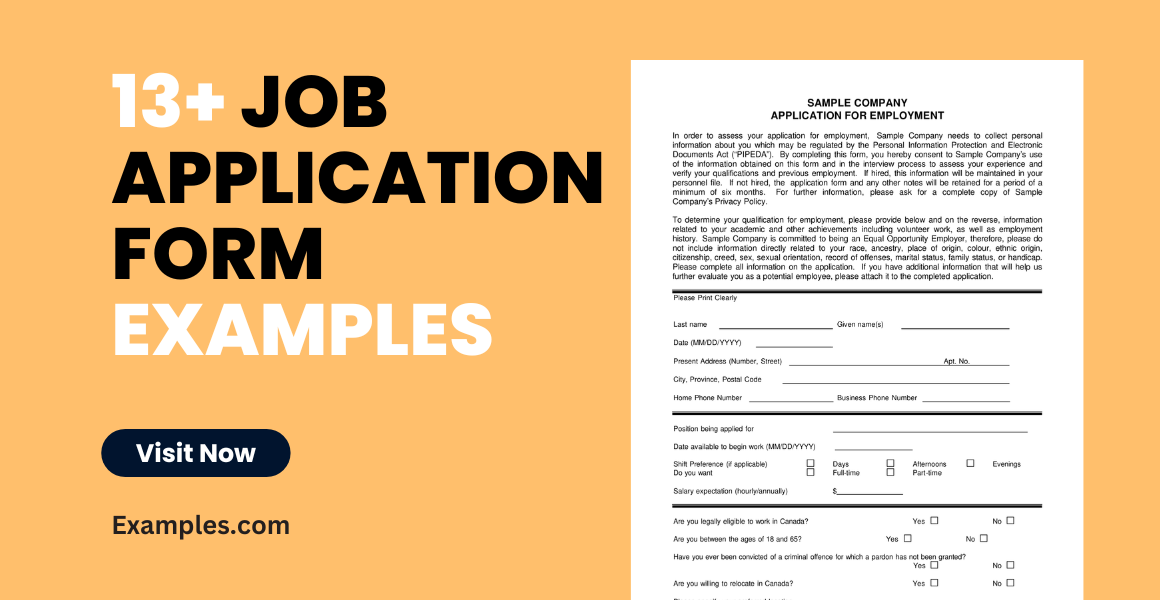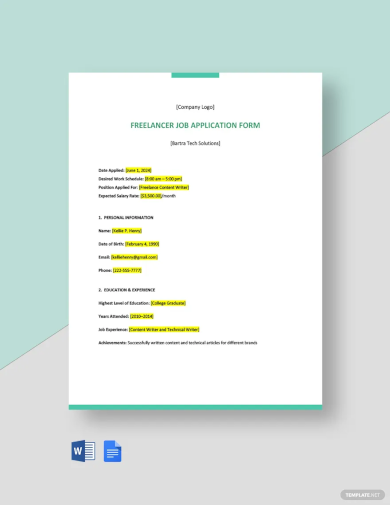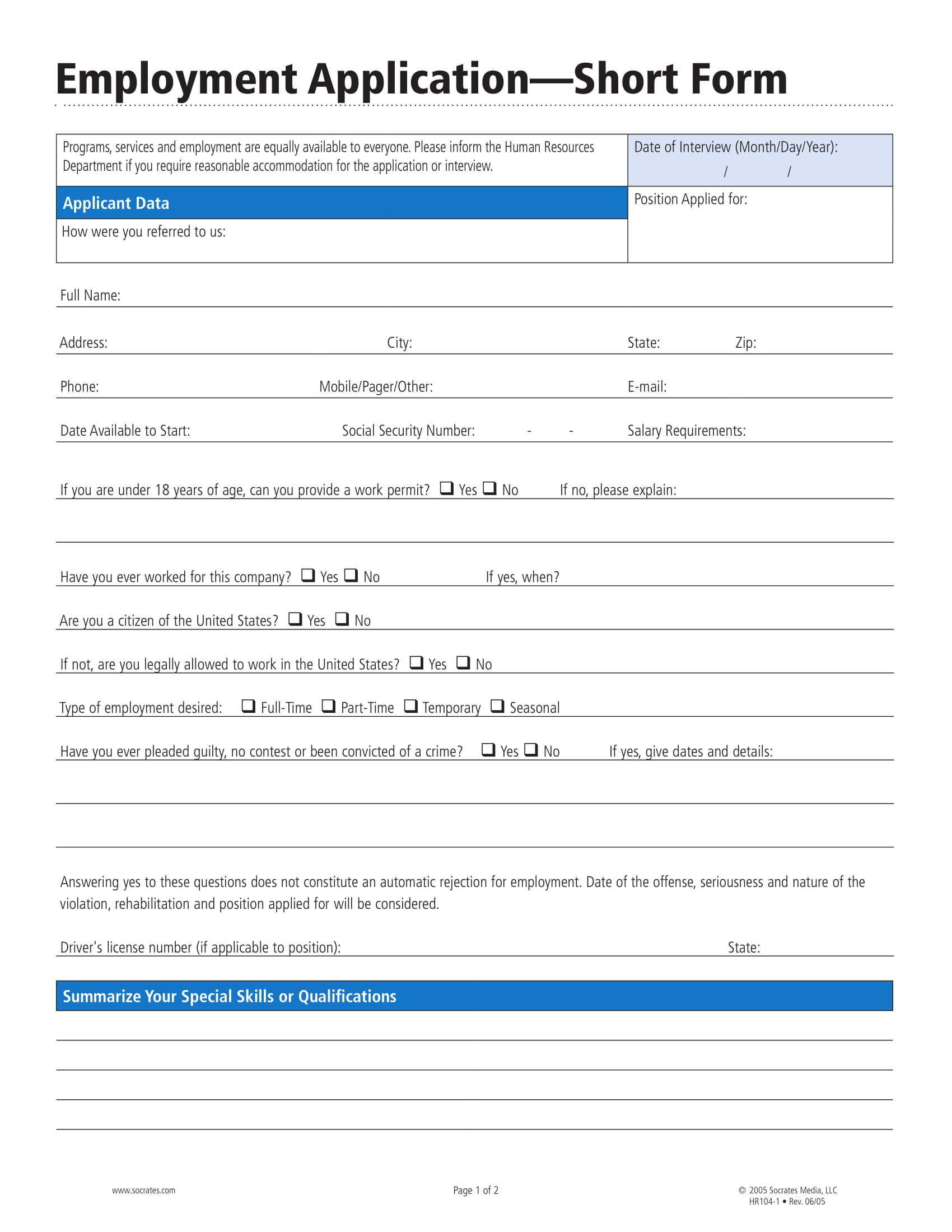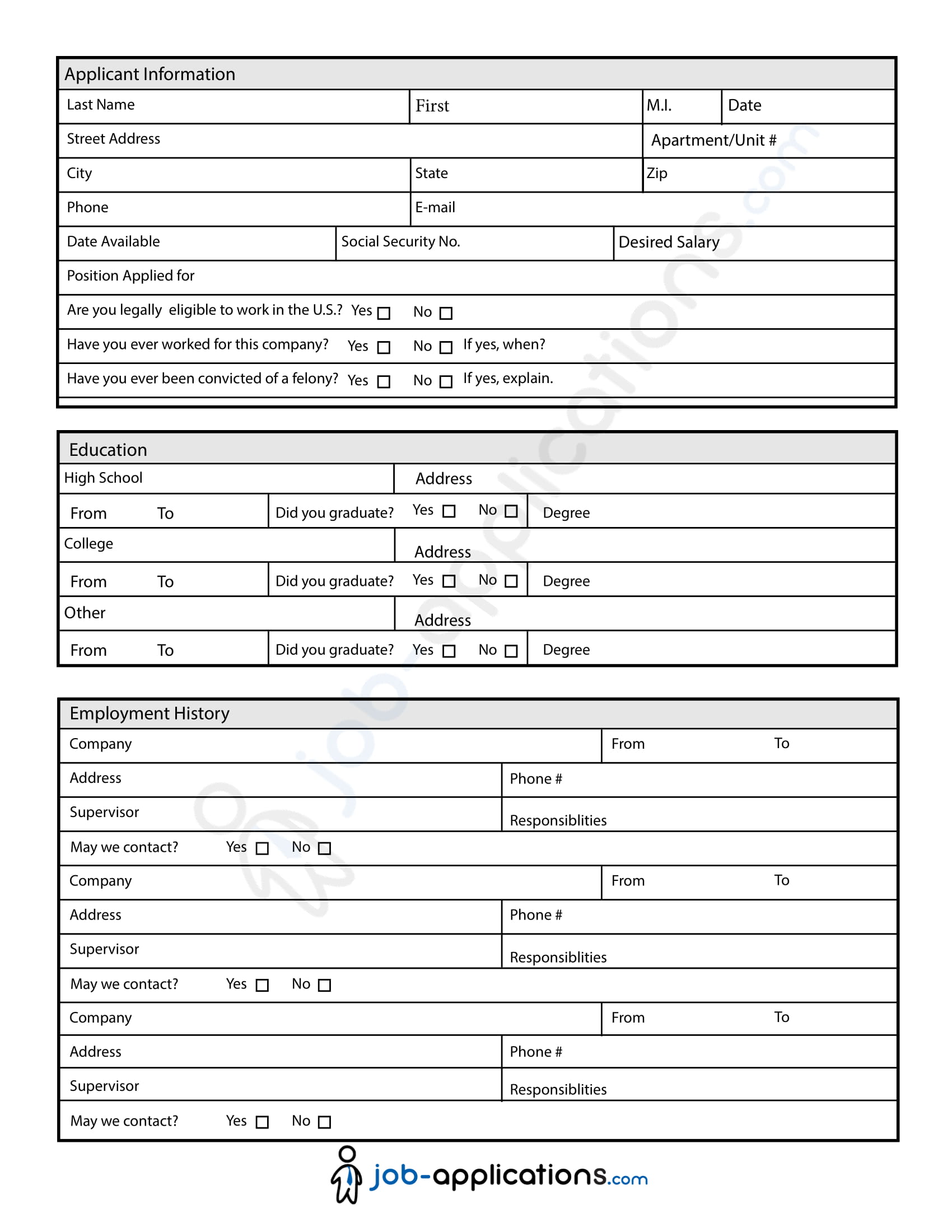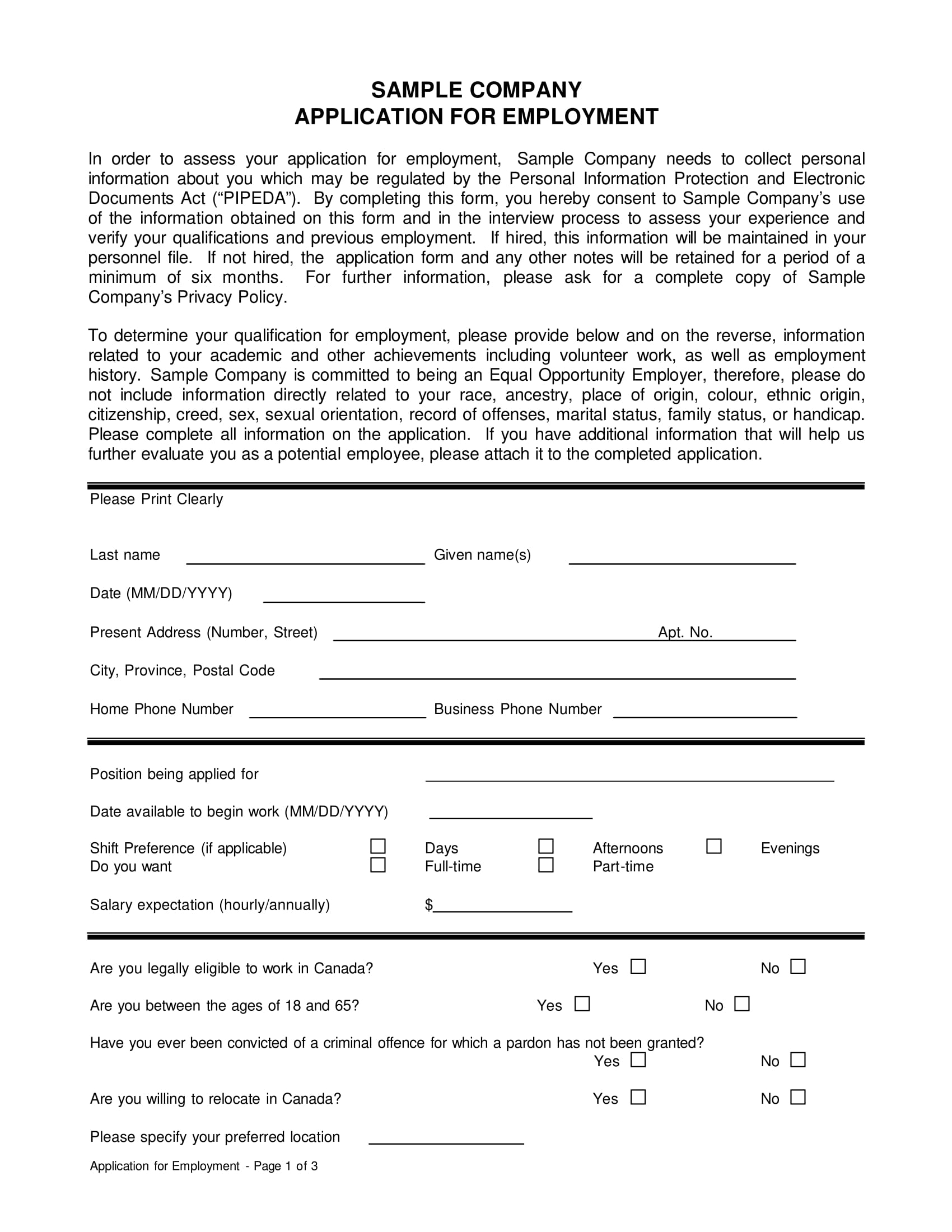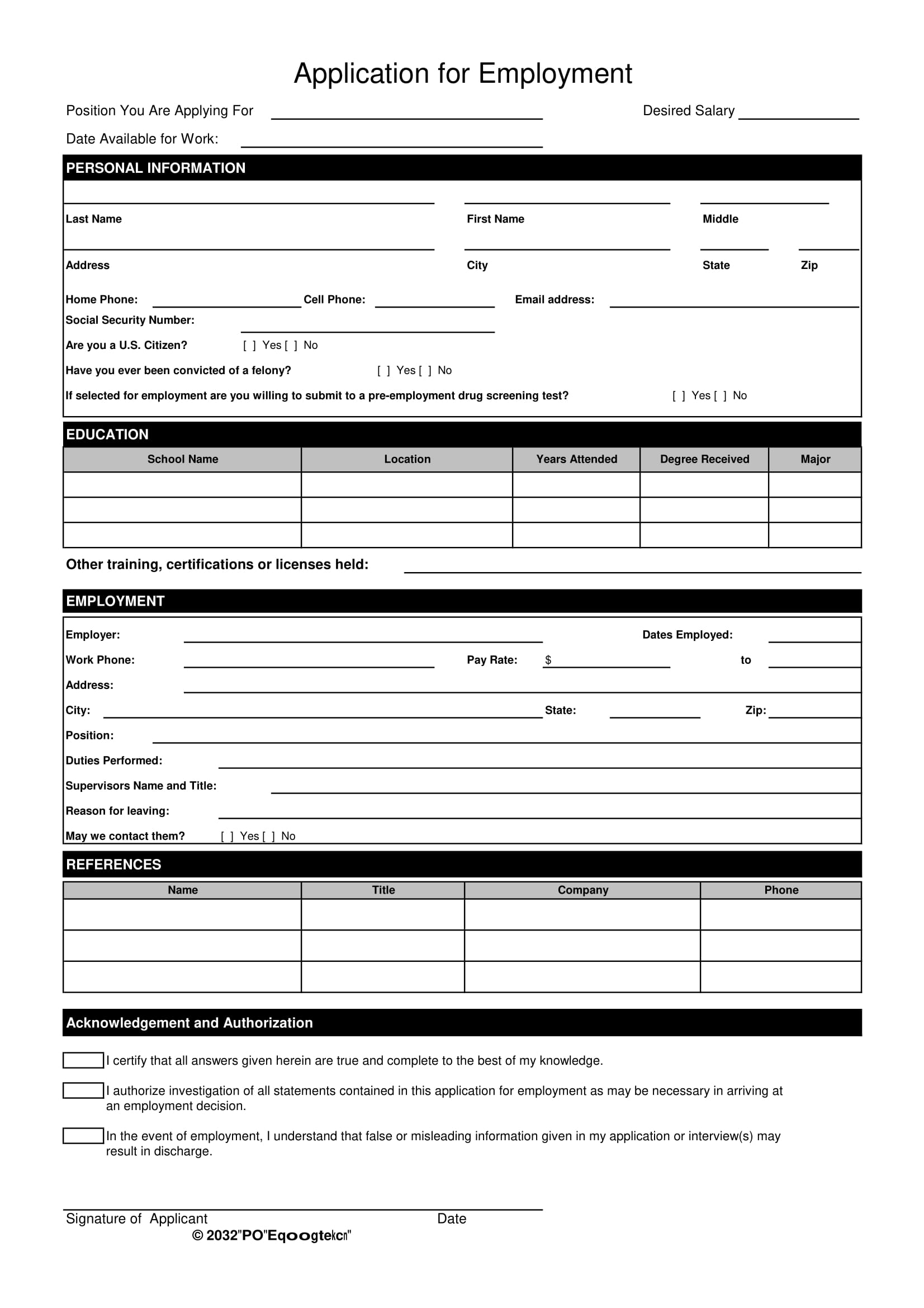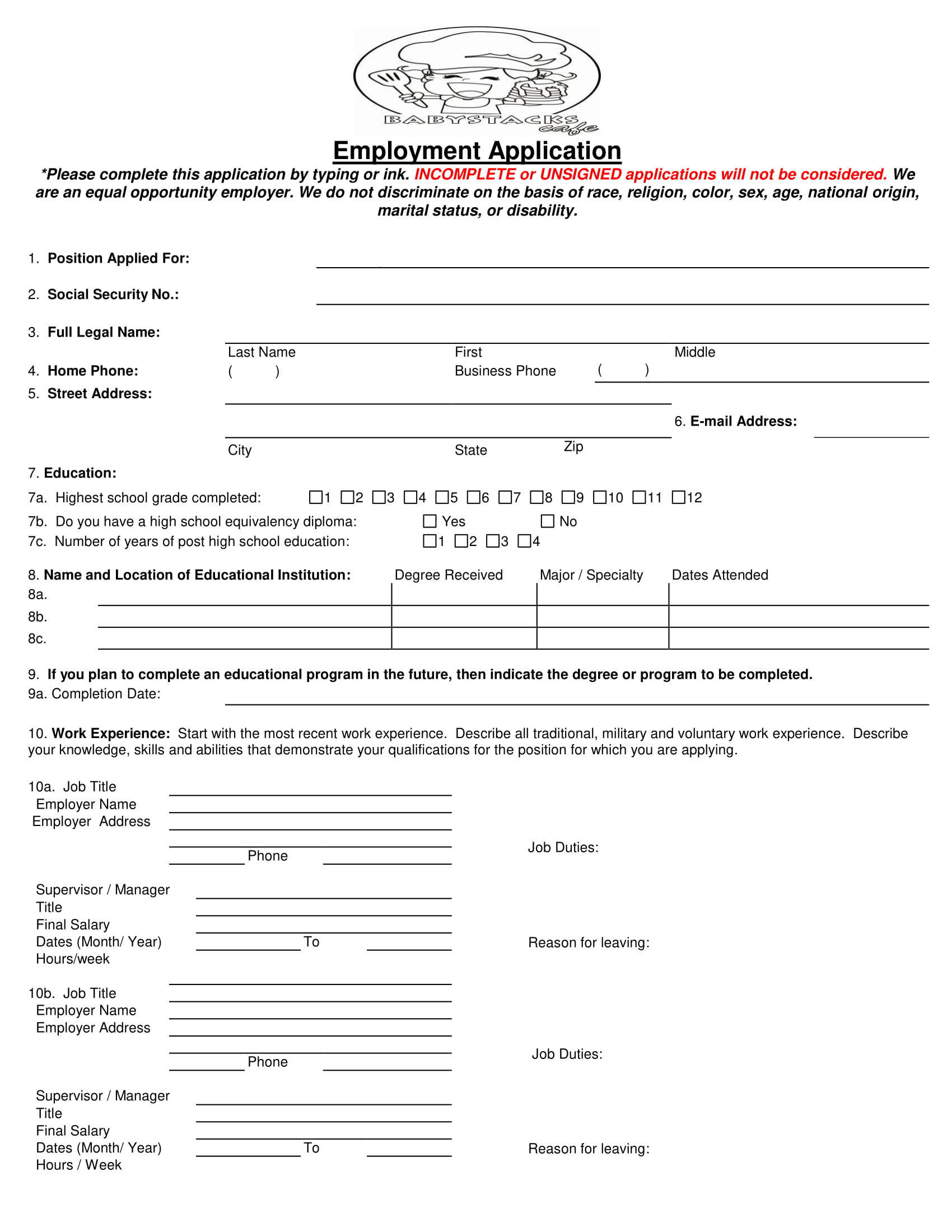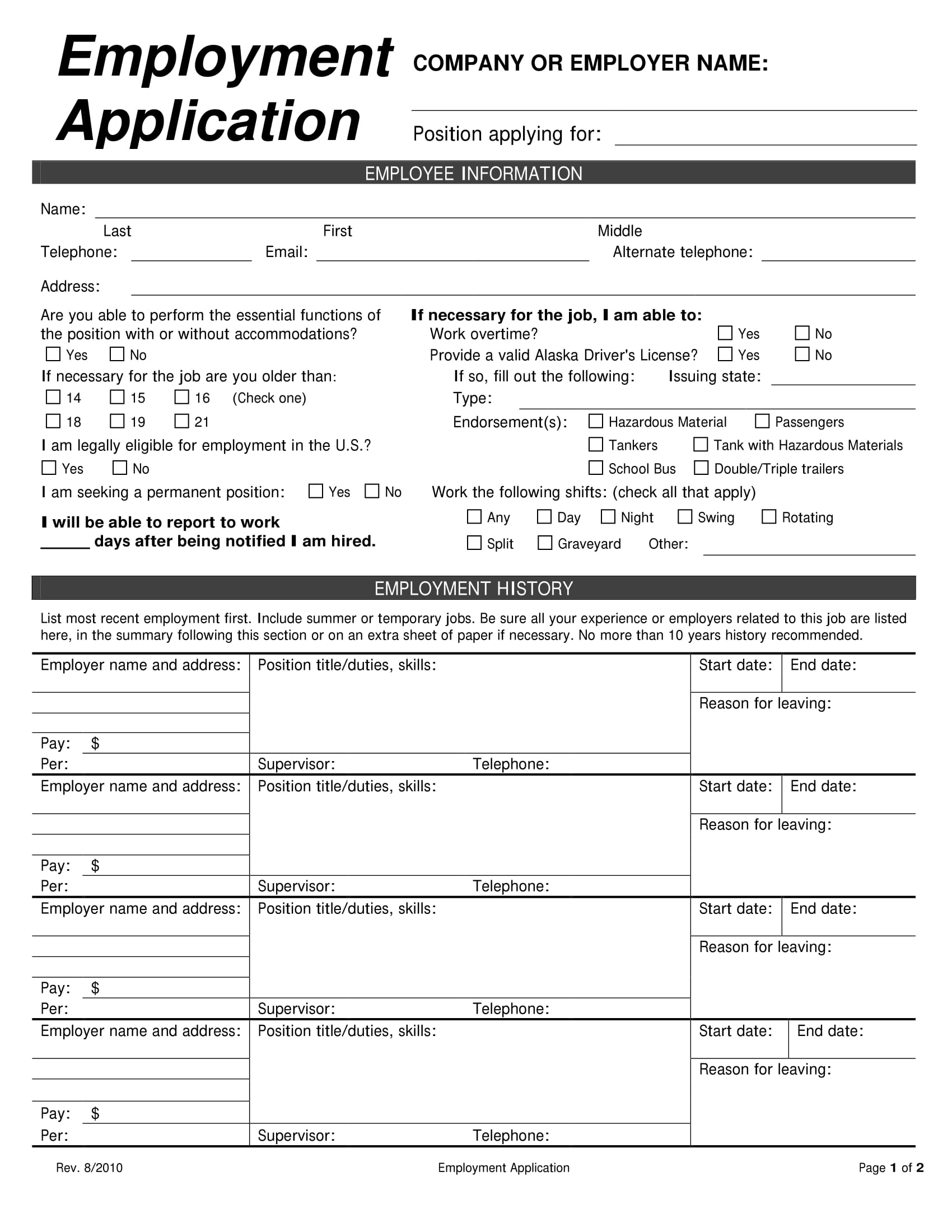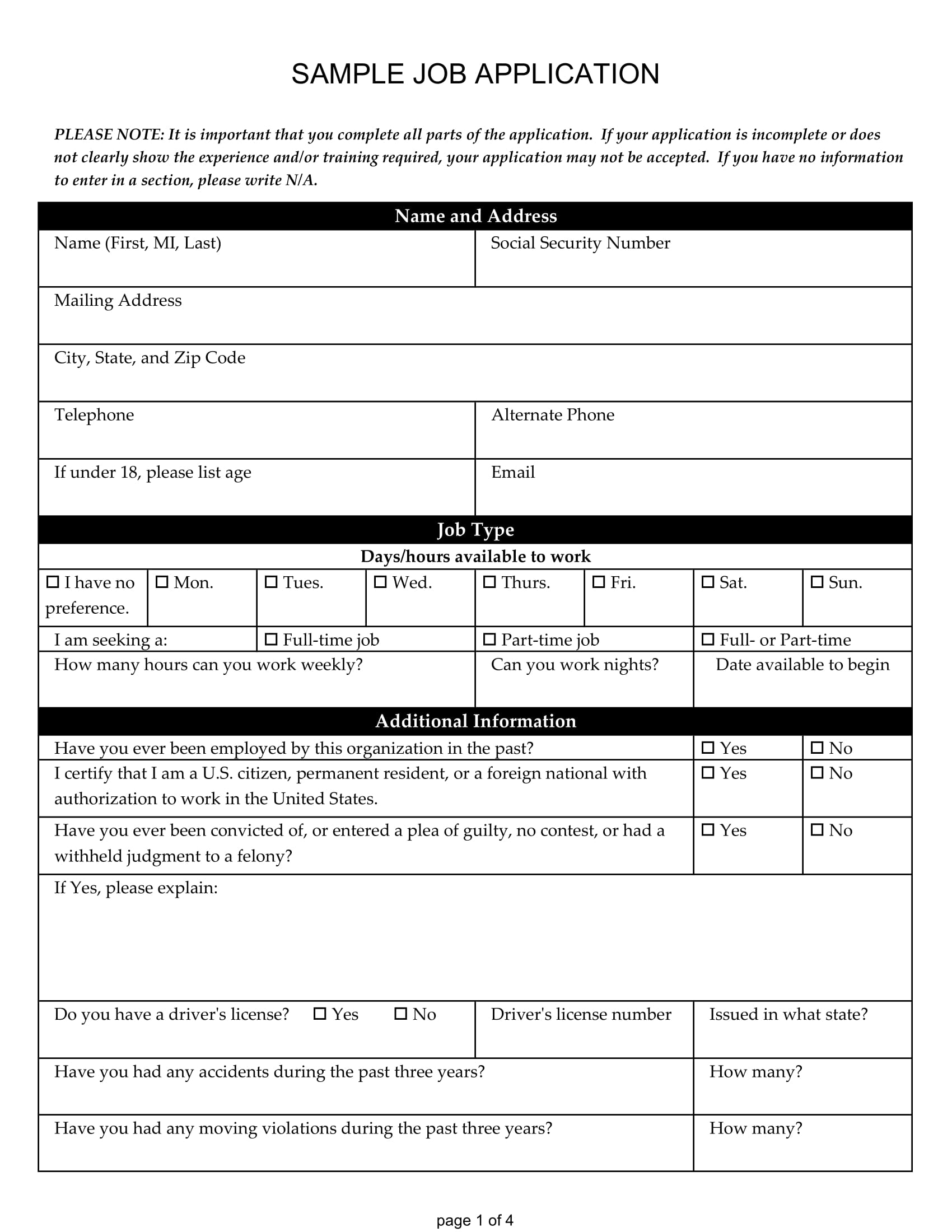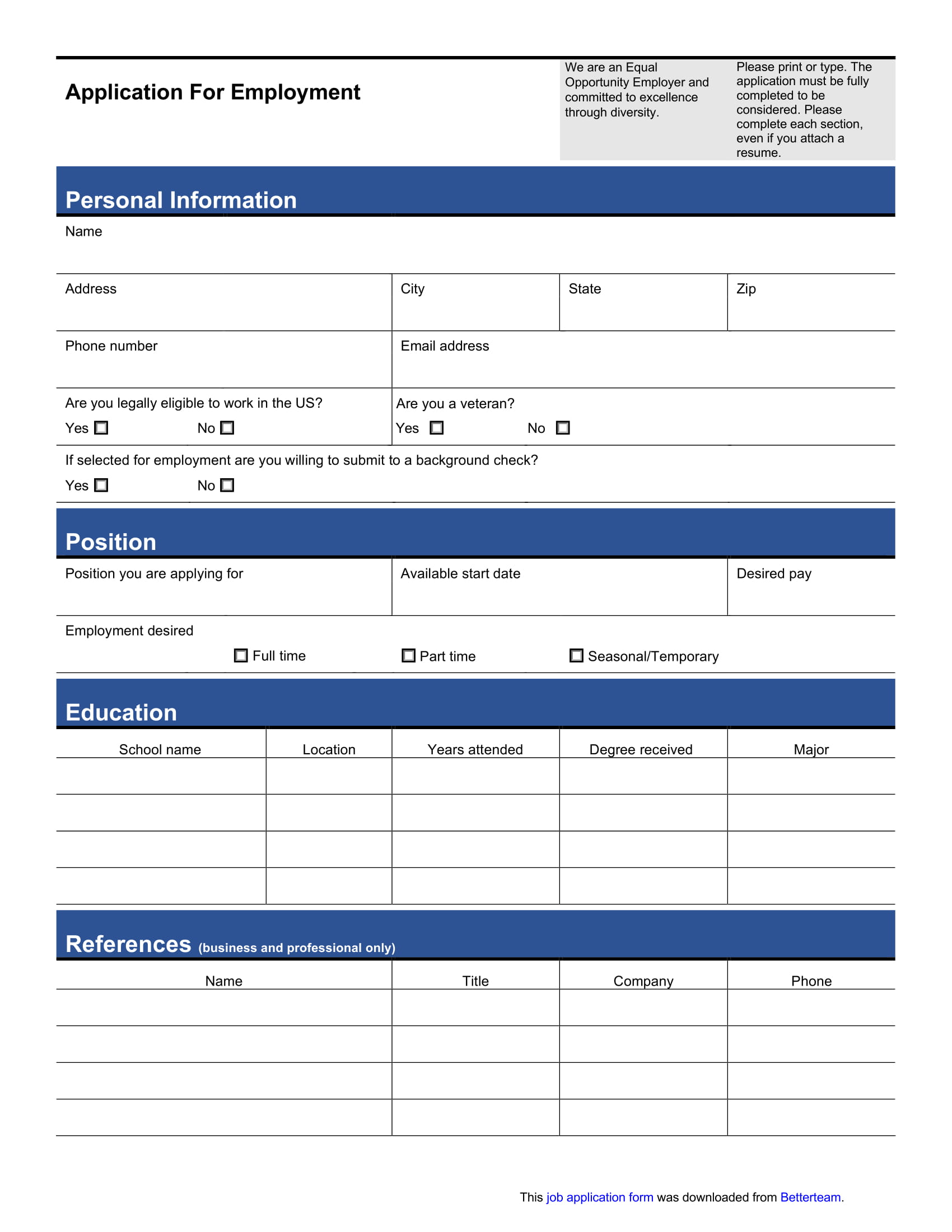13+ Job Application Form Examples
As an employer, you need to make sure that the vacant posts for employment will be filled with the most qualified candidates who have shown great interest to be a part of your business. A smart move that you can opt to execute is the creation of a job application form. Having this document can help you ensure that consistency of the information that job applicants provide you with. Moreover, it can help you veer away from screening the candidates not only mostly based on the impact of their resume format or the content of their application letter. A job application form can help you create a platform where candidates are assessed at the same level based on the information that you will require them to list.
Restaurant Job Application Form Template
Freelance Job Application Form Template
Sample Freelancer Job Application Form Template
Job Application for Employment Template
Employment Application Short Form
Job Application Form Template
Why Do You Need a Job Application Form?
Looking for potential employees that can add value to the business is no easy task. You have to be precise with the qualities and characteristics that you would like an applicant to encapsulate so you can narrow down the selection and screening procedures that you will implement. A job application form can help you a lot in this undertaking. Listed below are the reasons why you need to create and use a job application form for the business’ hiring processes. You may also see emails for job applications.
1. A job application form promotes uniformity, just like a volunteer application form and other kinds of application sheets. Most of us already know that application documents like resumes, application letters and the like are formatted differently. Since the approach of developing these documents are different from one another, there may be a chance that one’s credentials can be overlapped by how other candidates present their deliverables.
2. A job application form can lessen the sugar-coating and exaggeration which are commonly observed on resumes and cover letters. Especially if you do not want to review unnecessary information, having a job application letter will be best for you. Since all the applicants will get the same form, they will be judged based on the relevance of their skills and other credentials to the job that they are targeting to get. You may also see work applications.
3. A job application form can help you easily screen candidates. If you will place questions and inquiries that you specifically need for your assessment, then it will be a faster transaction for you to find the most qualified applicant out of the bunch of candidates. It will be hard for you to look at resumes alone as there may be other profiles that lack specific employment and background information. You may also see employment applications.
Generic Job Application Form
Job Application Form Example
What is in a Job Application Form?
Before sending a job offer email or handing a physical invitation for employment letter, you first need to ensure that you have objectively and equally assessed the strengths and deliverable of all candidates. This is the main reason why you have to thoroughly review the content of all application documents including the job application form that you have given to all applicants.
Since a job application form promotes uniformity, businesses need to ensure that all the essential information are already covered within the document. Though job application forms may differ from one business to another, there are some elements that are already expected to be included in this document. A few information that is usually seen in a job application form must include the following:
- The personal information of the applicant.
- The professional details of the applicant.
- The contact details that the employer may reach to inform the applicant about the results of the initial application. You may also see application email examples.
- The job position that the candidate is applying for.
- The employment background of the candidate.
- The educational background, as well as the details of the training and seminars the candidate has attended.
- The references that the employer may talk to so they can confirm the content of the job application letter and the other documents submitted by the applicant. You may also see application writings.
- Other information that the business would like to know about the candidate.
Sample Employment Application Form Template
Sample Job Application Form
Advantages of Having a Job Application Form
A job application form is a document that can help you a lot if you need to hire a new employee for your company. Though not all employers use this document, it will still be best if you can have one for your business. Listed below are some of the advantages that your business can get if you have a job application form at hand every time a hiring process will take place. You may also see application examples.
1. If you will use a job application form, you can have a more objective platform that can present equal opportunities for candidates to showcase their deliverable directly.
2. Disseminating a job application form to all candidates can ensure you that you can get the same information that you need for the assessment. Though application letters are still used nowadays, not all applicants can relay all the details that are related to the needs of employers.
3. Using a job application form can help you identify details that applicants commonly do not place in their professional profiles. For example, if you want to know their salary bracket or the reason why they left their previous employer, then you can place these questions and inquiries in your job application form. You may also see free applications.
4. Creating a job application form will allow you to implement standardization which means that you can truly get essential information based on what your business needs in terms of its workforce requirements.
5. It will be easier for you to look for the details that you must evaluate especially considering the fact that all the job application forms that you have given out are in the same format. You may also see volunteer applications.
6. Making a job application form and actually using it can make the assessment processes faster as you can already compare candidates easily unlike when you need to review all the content of their resumes or hear interview pieces which may not directly answer your questions. You may also see nursing applications.
Employment Application Form
Sample Job Application Form
Tips You Can Follow When Using a Job Application Form
Just like the resumes of your applicants, keep in mind that not all job application forms are created equal. The way you develop the content and layout of this document can affect the final job application form that you will use. There are several things that you have to keep in mind when creating this hiring tool. If you have decided to use a job application form, here are a few useful tips that you can incorporate into its usage:
1. Make sure that you have space at the end of the document for the signature of the candidates. It is important for you to ensure that the candidates are aware that failure to provide correct and accurate information can cause their application to be invalid. You may also see sample applications.
2. Create a format that is easy to understand. You do not want your applicants to put misleading information or place details all over the place. Developing a well-formatted job application form can also help you to review these documents. You may also see internship applications.
3. You can refer to samples that are already used in the industry but it will still work best for you if you will make a job application form based on the needs of your business and the nature of its operations. Doing this can make your job application form more relevant to your hiring undertakings.
4. Like your interview evaluation forms, your job application forms must also be precise and specific. Simplify the document as much as possible so that you can lessen the possibilities of misunderstandings or the placement of misleading information.
Standard Job Application Form
Simple Job Application Form
Developing a Job Application Form
Having a job application form can make your hiring process more efficient. The samples that we have listed in this post can help you get references on what to include in this document and how you can format them to make the job application form as organized as possible. The development of a job application form is a process which is why you have to ensure that all the details of this form has been assessed to fit the requirements and standards of your business. You may also see school applications.
Create a job application form now so you can witness first-hand how it can make things faster, better, and more effective when hiring applicants. Always remember to review and test the job application form first before using it on actual hiring processes. You may experience a few roadblocks when making this document especially if it is your first time to create one. This is normal as there are details that are specifically beneficial for your corporate needs. We hope that the tips, guidelines, and samples that we have provided you with are already enough for you to make an impressive and highly-usable job application form. You may also see business applications.


